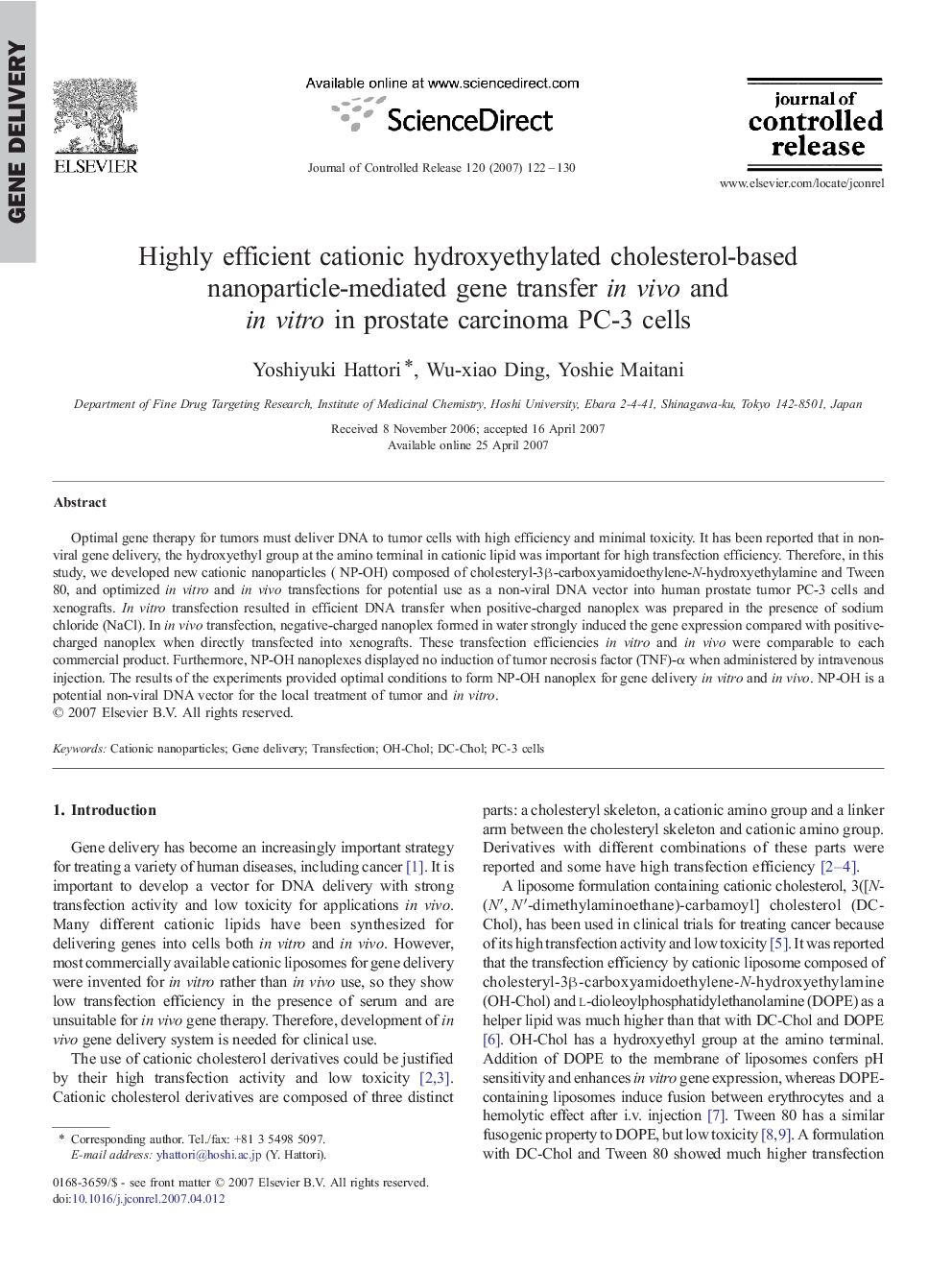| Article ID | Journal | Published Year | Pages | File Type |
|---|---|---|---|---|
| 1427524 | Journal of Controlled Release | 2007 | 9 Pages |
Optimal gene therapy for tumors must deliver DNA to tumor cells with high efficiency and minimal toxicity. It has been reported that in non-viral gene delivery, the hydroxyethyl group at the amino terminal in cationic lipid was important for high transfection efficiency. Therefore, in this study, we developed new cationic nanoparticles ( NP-OH) composed of cholesteryl-3β-carboxyamidoethylene-N-hydroxyethylamine and Tween 80, and optimized in vitro and in vivo transfections for potential use as a non-viral DNA vector into human prostate tumor PC-3 cells and xenografts. In vitro transfection resulted in efficient DNA transfer when positive-charged nanoplex was prepared in the presence of sodium chloride (NaCl). In in vivo transfection, negative-charged nanoplex formed in water strongly induced the gene expression compared with positive-charged nanoplex when directly transfected into xenografts. These transfection efficiencies in vitro and in vivo were comparable to each commercial product. Furthermore, NP-OH nanoplexes displayed no induction of tumor necrosis factor (TNF)-α when administered by intravenous injection. The results of the experiments provided optimal conditions to form NP-OH nanoplex for gene delivery in vitro and in vivo. NP-OH is a potential non-viral DNA vector for the local treatment of tumor and in vitro.
